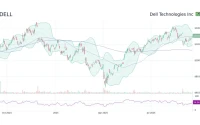The $70 Billion Whisper: How One Platform Just Redrew the Map of Finance
Something happened last Thursday.
It wasn’t a headline on the evening news. It wasn’t a panicked alert from Wall Street. It was quieter than that, more fundamental. It was a signal that pulsed through the digital ether, a number that flashed onto the dashboards of a select few who were watching. That number was seventy billion dollars.
In a single 24-hour period, decentralized exchanges specializing in perpetuals—put simply, they are platforms where you can trade on the future price of an asset without a central company holding the keys—processed a volume of trades that shattered every previous record. This wasn't a gradual climb; it was a quantum leap. A sonic boom that announced a new reality.
And at the heart of this boom, responsible for more than half of that staggering total, was a single name: Aster.
I have to be honest, when I saw the final tally for Thursday, I just stared at the screen. Not just at the number, but at the name next to it. The Aster DEX, a relatively new derivatives platform built on the BNB Chain, had processed nearly $36 billion in trades. Not over a month. Not over a week. In one day. This is the kind of breakthrough that reminds me why I got into this field in the first place.
Think about that for a moment. This wasn't a legacy institution with a century of history and a skyscraper in Manhattan. This was a piece of code, a community, a new idea. And it didn't just compete with its rivals; it dwarfed them. It was a tidal wave that followed two days of already massive swells, with the market hitting $52 billion on Tuesday and $67 billion on Wednesday, but Thursday was the moment the wave crested and you could finally see just how much power was behind it.
What we are witnessing is a profound paradigm shift. This isn't just about a new crypto platform having a good day. It's about the speed at which the future can now be built.
When Velocity Becomes the New Gravity
From Zero to Gravity

For a century, the world of finance has been defined by immense gravity. It took decades, generations, to build the trust, infrastructure, and liquidity required to become a pillar of the global economy. Companies grew like redwoods—slowly, powerfully, and immovably.
What Aster and this $70 billion day represent is the invention of a new kind of physics.
This reminds me of the early days of the web, right before the world truly understood what it was. Pundits would dismiss a new website or a new piece of software as a toy, a niche interest. They were measuring it with an old yardstick. They didn't see that the underlying rules had changed. It was like trying to measure the speed of light with a stopwatch. The rise of the Aster crypto platform feels like that. It’s a moment where a decentralized network demonstrates an ability to coordinate capital and activity at a scale and speed that was, until now, the exclusive domain of the world’s most powerful centralized institutions.
This is the "Big Idea" that I believe so many are missing. The story isn't the dollar amount. The story is the velocity. What does it mean for our world when a new financial primitive can be launched and, within a breathtakingly short time, achieve a scale that rivals the old guard? What happens when innovation is no longer about asking for permission from regulators and convincing entrenched boards, but about writing elegant code and inspiring a global community?
It means the cycle of disruption is about to accelerate beyond anything we've ever seen. It means the gap between an idea scribbled on a digital whiteboard and a world-spanning economic engine is collapsing right before our eyes.
Of course, with this kind of power—the ability to spin up global-scale financial markets in the blink of an eye—comes an immense responsibility. We have to build not just for speed, but for stability, fairness, and accessibility. The tools we are creating are not toys. They are the scaffolding for a new kind of economy, and we have a duty to engineer them with the foresight and care that such a task demands.
But don't let the caution overshadow the sheer wonder of this moment. We are here. We are watching it happen. You are watching it happen. The question is no longer if decentralized finance will reshape our world. The only question left is, what will we build with it?
---
The New Financial Gravity
What we saw last week wasn't just a record. It was a proof of concept. It proved that a small, dedicated team can deploy a system that outperforms the giants, not by playing their game, but by creating a new one entirely. The future of finance won't be televised from a stock exchange floor; it will be deployed as an update, a quiet revolution that you only notice when you see the numbers and realize the world has already changed.
Reference article source:









